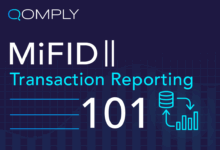Financial Planning Software For Registered Investment Advisors With Client Portal Integration
Financial planning software for registered investment advisors with client portal integration offers a comprehensive solution for streamlining financial processes and enhancing client communication.
It defines key features, explains the importance of client portal integration, and showcases popular software options used by RIAs.
Overview of Financial Planning Software for Registered Investment Advisors with Client Portal Integration
Financial planning software for Registered Investment Advisors (RIAs) is a powerful tool designed to assist professionals in managing their clients’ finances effectively. This software typically includes various features tailored to the specific needs of financial advisors and their clients.
Client portal integration is a key component of financial planning software for RIAs, as it allows advisors to securely share important documents, reports, and updates with their clients. This feature enhances communication and collaboration between advisors and clients, fostering a more transparent and efficient relationship.
One of the main advantages of using financial planning software with client portal integration is the streamlined process it provides for both advisors and clients. Advisors can easily access and analyze their clients’ financial information, create customized financial plans, and monitor progress towards financial goals. On the other hand, clients can view their financial data in real-time, track their investments, and communicate with their advisors seamlessly through the client portal.
Popular financial planning software used by RIAs include:
Examples of Popular Financial Planning Software
- 1. eMoney Advisor: Known for its comprehensive financial planning capabilities and interactive client portal.
- 2. MoneyGuidePro: Offers goal-based financial planning tools and intuitive client communication features.
- 3. Advyzon: Provides robust portfolio management and reporting functionalities, along with a user-friendly client portal.
- 4. Orion Advisor Tech: Offers integrated technology solutions for portfolio management, trading, and client communication.
Benefits of Using Financial Planning Software
Using specialized financial planning software offers a multitude of benefits for Registered Investment Advisors (RIAs). Not only does it streamline the planning process, but it also enhances communication with clients, saves time, and improves overall efficiency.
Enhanced Communication and Collaboration with Client Portal Integration
Client portal integration within financial planning software allows RIAs to communicate effectively with their clients in a secure online environment. This feature enables advisors to share important documents, reports, and updates with clients in real-time, fostering transparency and trust in the advisor-client relationship. Clients can access their financial information anytime, anywhere, and collaborate with their advisor on setting and tracking financial goals.
Time-Saving Automation Features
Financial planning software often includes automation features that can significantly reduce manual tasks and paperwork for RIAs. From data entry to report generation, automation streamlines processes and saves valuable time, allowing advisors to focus more on providing personalized advice and building relationships with clients. By automating repetitive tasks, advisors can increase their productivity and efficiency, ultimately leading to better client service.
Positive Impact on RIA Practices
In real-world scenarios, financial planning software has been shown to positively impact RIA practices by improving client engagement, increasing advisor productivity, and enhancing overall service quality. By leveraging the capabilities of the software, RIAs can deliver comprehensive financial plans, monitor progress towards goals, and adjust strategies as needed, leading to better outcomes for their clients. The software serves as a valuable tool that empowers advisors to make informed decisions, provide tailored recommendations, and ultimately help clients achieve their financial objectives.
Key Factors to Consider When Choosing Financial Planning Software
When selecting financial planning software as a registered investment advisor (RIA), there are several key factors to consider to ensure you choose the right solution for your practice. It’s essential to evaluate various criteria to make an informed decision that aligns with your business goals and client needs.
Scalability
One crucial factor to consider when choosing financial planning software is scalability. The software should be able to grow with your business as your client base expands and your practice evolves. Look for software that can accommodate a larger volume of clients and complex financial scenarios without sacrificing performance.
Customization
Another important aspect to evaluate is the level of customization the software offers. As an RIA, you may have specific workflows, reporting requirements, or client communication preferences. Choose software that allows you to tailor the platform to meet your unique needs and branding, ensuring a seamless integration with your existing processes.
Pricing
Consider the pricing structure of the financial planning software to ensure it aligns with your budget and provides value for the services offered. Compare different software options based on the features included, subscription models, and any additional costs for support or training. It’s essential to strike a balance between affordability and functionality to maximize the return on investment.
Security Measures
Client data protection is paramount in the financial services industry. When selecting software, prioritize security measures that safeguard sensitive information and maintain compliance with industry regulations. Look for encryption protocols, secure data storage, and multi-factor authentication to ensure the confidentiality and integrity of client data.
Compatibility
Ensure that the financial planning software is compatible with your existing tools and systems to streamline workflows and enhance efficiency. Integration with CRM platforms, portfolio management systems, or other third-party applications can facilitate data exchange and automation, reducing manual errors and improving overall productivity.
Implementation and Integration Process
Implementing financial planning software within an RIA involves several key steps to ensure a smooth transition and effective use of the tools. Integration of client portals seamlessly into the software is crucial for enhancing client communication and engagement. Let’s explore the process, challenges, and best practices associated with implementing and integrating financial planning software for RIAs.
Implementation Process
- Assessment of Needs: Begin by identifying the specific needs and requirements of your firm to determine the right financial planning software that aligns with your goals.
- Selection of Software: Research and choose a reliable financial planning software that offers features such as goal tracking, investment analysis, and client reporting.
- Customization and Configuration: Work with the software provider to customize the platform based on your firm’s branding, workflows, and client communication preferences.
- Data Migration: Transfer existing client data and financial information to the new software system carefully to ensure accuracy and completeness.
- Training and Onboarding: Conduct training sessions for advisors and staff members to familiarize them with the software’s functionalities and best practices.
Integration of Client Portals
- Client Portal Setup: Configure the client portal within the financial planning software to provide clients with secure access to their financial information, reports, and communication tools.
- Customization: Personalize the client portal with your firm’s branding elements and tailored content to enhance the client experience.
- Security Measures: Implement robust security measures to protect client data and ensure compliance with regulatory requirements.
- Client Communication: Encourage clients to utilize the portal for secure messaging, document sharing, and tracking progress towards their financial goals.
Challenges and Best Practices
- Common Challenges: Resistance to change, data migration errors, and technical issues during the implementation phase can pose challenges. Address these proactively with proper planning and support.
- Training Strategies: Provide comprehensive training materials, video tutorials, and ongoing support to advisors and clients to facilitate a smooth transition and maximize software utilization.
- Feedback and Optimization: Gather feedback from users to identify areas for improvement and optimize the software’s features to better meet the needs of your firm and clients.
- Continuous Monitoring: Regularly monitor system performance, data accuracy, and client engagement metrics to ensure the software is delivering the intended benefits.
Ultimate Conclusion
In conclusion, embracing financial planning software with client portal integration can revolutionize how advisors interact with clients, leading to improved efficiency and better outcomes.


